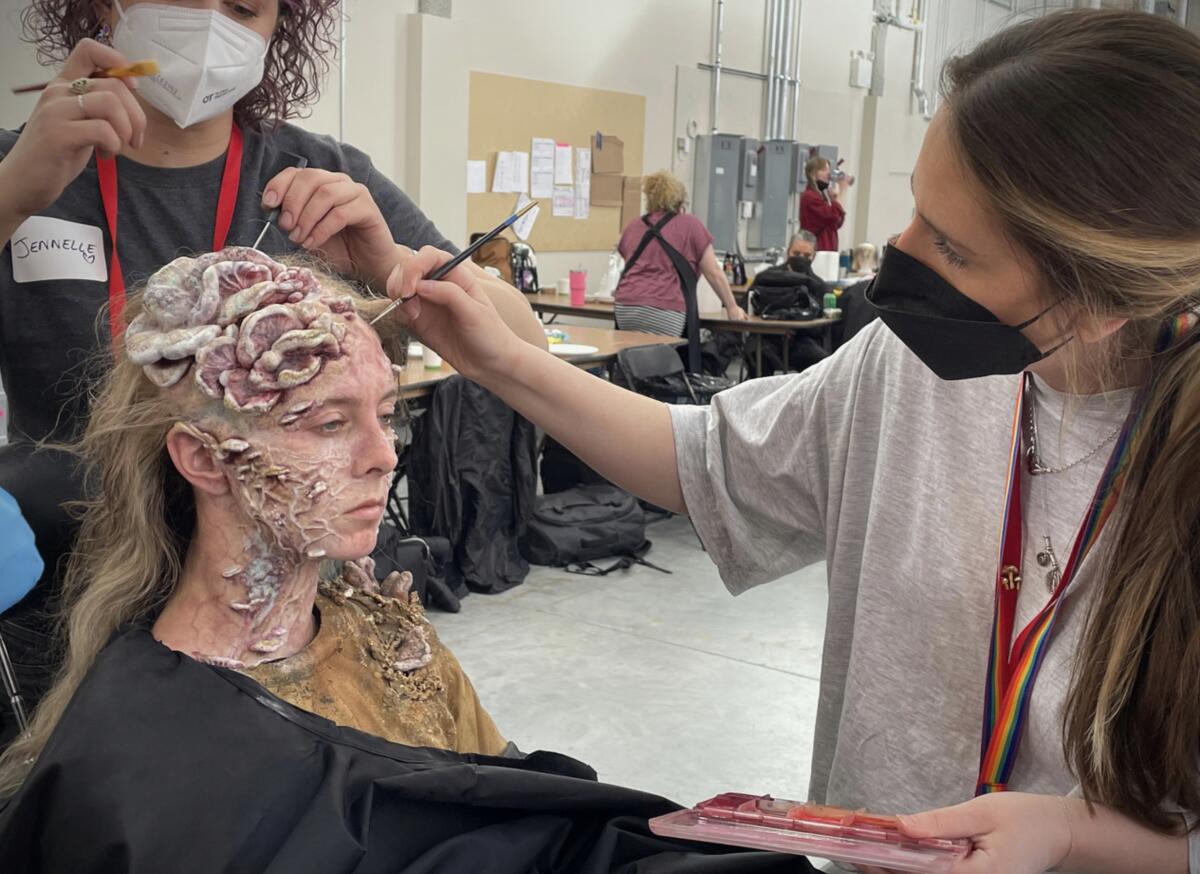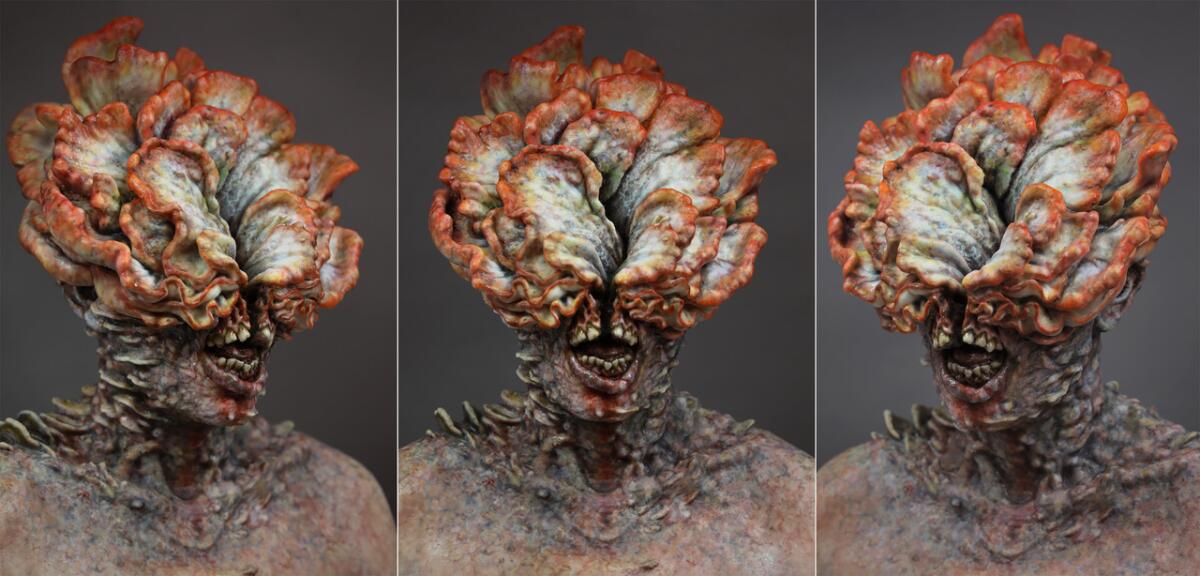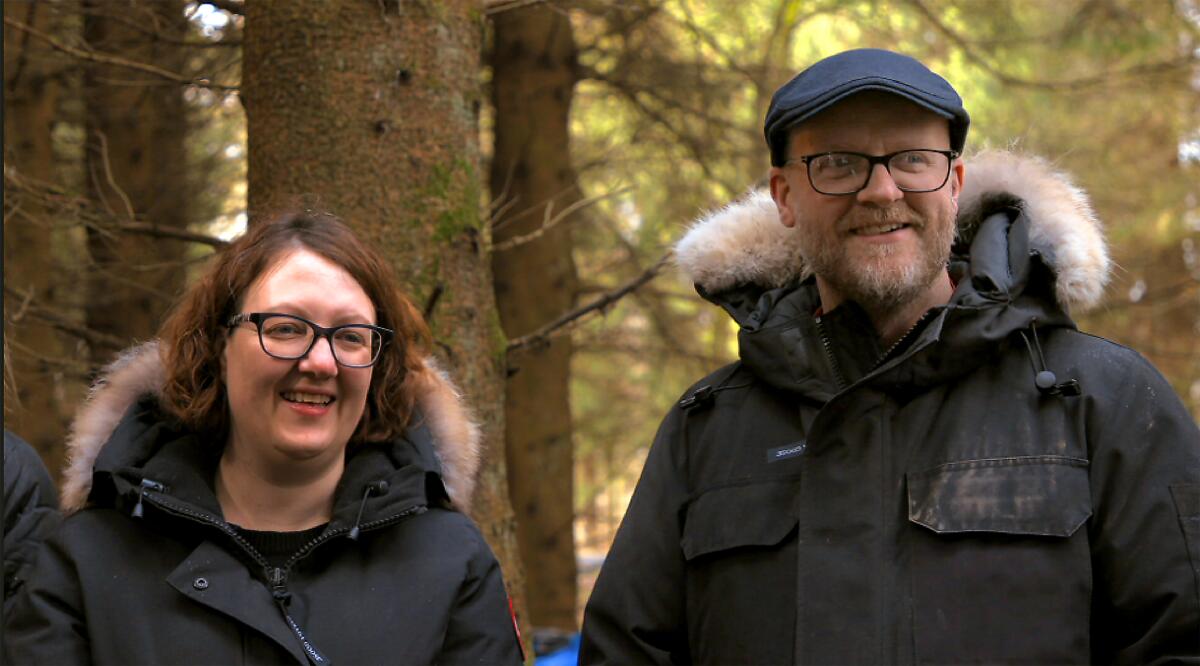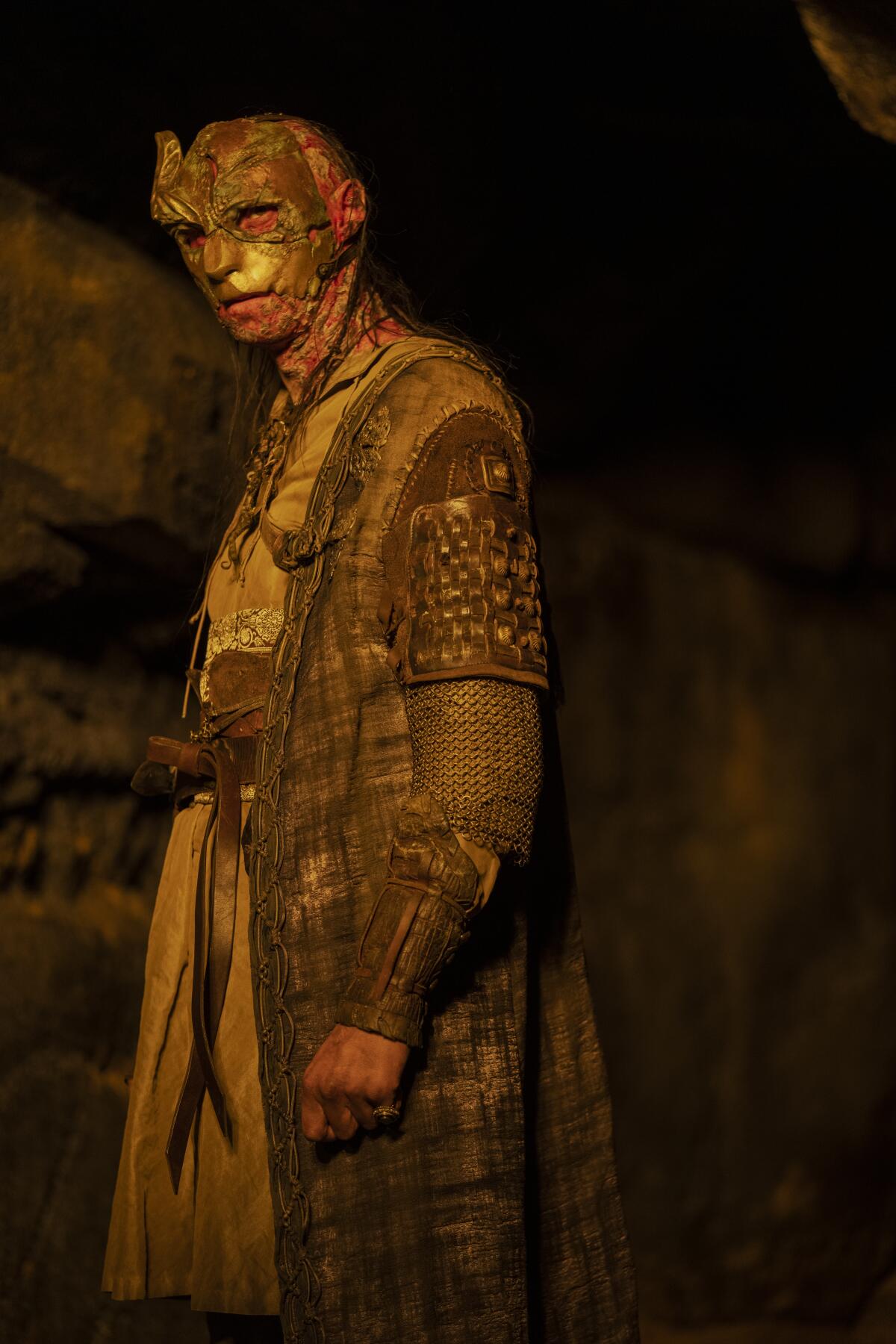Sign up for The Envelope
Get exclusive awards season news, in-depth interviews and columnist Glenn Whipp’s must-read analysis straight to your inbox.
You may occasionally receive promotional content from the Los Angeles Times.

Last year when young Lottie Gower went trick-or-treating in London dressed as Freddy Krueger, she surely out-monstered every other “Nightmare on Elm Street”-inspired kid trolling for candy. After all, her parents applied the makeup and they make monsters for a living.
Barrie and Sarah Gower’s greatest hits include “Harry Potter” goblins, the slimy demon Vecna of “Stranger Things” and various “Game of Thrones” freaks, for which Barrie won three Emmy awards. This year, the couple nabbed two prosthetic makeup nominations, for “House of the Dragon” and “The Last of Us.” “In a way, we’re living Halloween every day, so painting my daughter’s face was really a bit of a busman’s holiday,” Barrie Gower says with a laugh.
The couple met in Budapest on the set of a movie they’d just as soon forget, but Barrie vividly remembers spotting his wife-to-be in the production’s CGI department. “We met on the first day and got together on Friday at the start-shoot party,” he recalls. Sarah adds, “We’d have drinks by the river after work and go on lovely walks.”

Back in England, Barrie and Sarah married and in 2010 formed their BGFX company. Speaking by video call from their home in suburban London, the Gowers bantered about their partnership and delved into the gory details behind “The Last of Us” and “House of the Dragon.”
When you two arrive at work every day, what’s the division of labor?
Sarah: I concentrate on paperwork, scheduling and crewing so that Barrie can focus on being the creative. He’s like the battery pack, and I’m the engine that keeps the 100 cogs going.

Smith explains how he overcame the ‘ick factor’ to turn Daemon Targaryen, the ‘Game of Thrones’ prequel’s rogue prince, into an unlikely fan favorite.
Barrie: [To Sarah] Or, I’m the monkey and you’re the organ grinder. [They laugh]
In “House of the Dragon” you depict this hideous flesh-eating disease afflicting King Viserys, played by Paddy Considine. How did you do that?

Barrie: We work very closely with the makeup designer Amanda Knight. For the first three or four episodes, the king’s deterioration is mostly told through straight makeup, except where we show an injury on his finger treated by maggots that eat the dead flesh. On the king’s face, the transformation is shown through his receding hairline. We made a silicone bald cap with sores and blisters, then used subtle textured prosthetic transfer appliances on his face. We added more and more until Episode 8 when we used a body double.
How did that work?
Barrie: We got this very thin double and added ulcerated wounds all over his body, shading his bone structure to make him look emaciated. Then the double ghosted Paddy’s performance, which we showed to him on a monitor so he could match positions. After that, Angus Bickerton and his VFX team married the two performances together.
In December 2021, “The Last of Us” co-creators Craig Mazin and Neil Druckmann invited you to basically transform hordes of actors into monsters devastated by fungal infections. That must have been a massive undertaking.

Barrie: Working with Craig on “Chernobyl,” we had created different stages of radiation burns from what looked like a sunburn to very extensive burns with skin flaying off the body. “The Last of Us” was a similar exercise. For recently infected people, we did straight makeup with a bit of discoloration around the eyes. From there we created little stalks rising from the skin with mushrooms breaking out and growing from the neck up onto the face. Then the mushrooms got larger and larger until they broke through their skulls. We researched so many types of fungus!
Sarah: It got to the point where our crew would go out for a woodlands walk, and if they came across fungus, they’d take photos for reference. We were all obsessed.
Barrie: The irony is I can’t stand mushrooms. I don’t eat mushrooms. I can’t stand them. But they look beautiful.
“The Bloater,” which emerges from underground in Episode 5, embodies the infection at its most extreme with a thick fungal overgrowth. How did you bring this character to life?

Barrie: The Bloater was a British stunt performer called Adam Basil. We created a foam rubber suit and zipped him into it. Adam’s a big guy, 6 foot 6, I think, and by the time we put all these mushrooms on him, he was the best part of 7 feet tall. The suit was huge, made out of lightweight foam, like upholstery foam. It was the equivalent of Adam wearing a sofa on set.
Bulky!
Barrie: His performance was great, but watching the dailies, we realized that the scale still needed to be increased, so Adam was scanned. Weta Digital used our suit, and his performance as lighting and texture references to model and manipulate the Bloater in postproduction.
Sarah: Again, that was a great crossover between the two departments.
Given all the advances in computer-generated effects, are you tempted to get into digital prosthetics yourself?
Barrie: I find it slightly clinical. I still love using modeling clay, I love mixing plaster of Paris, I love using oil paints, and the smells! All of that gets my creative juices flowing.
We trace the history of Naughty Dog’s pop culture phenomenon, from the video game’s 2013 debut to its adaptation as an HBO series 10 years later.
Your company excels in fabricating the illusion of gore. Are you fascinated with blood and guts?
Barrie: It’s funny, because when I was a teenager, I’d buy Fangoria magazine and read articles showing how monster makers like Rick Baker and Greg Cannom and Steve Johnson made prosthetics. That’s what drew me into this profession, but blood and gore as such? We did a lot of that in “Game of Thrones,” with people getting decapitated or having their throats cut open. That doesn’t really float my boat. Now I’m driven by fantasy creatures or character makeup where you age someone 40 years in a biopic.
Sarah: But whenever we get a script, Barrie still goes through it and picks the characters he likes: “Ooh, that’s a good one.” And then we make sure Barrie does that character.
Sign up for The Envelope
Get exclusive awards season news, in-depth interviews and columnist Glenn Whipp’s must-read analysis straight to your inbox.
You may occasionally receive promotional content from the Los Angeles Times.